St Féichin's Church
Pre-Norman Church
This small church was first erected as a simple rectangular building with antae. The 11 metre long nave was built in the 12th century. It had plain windows and a fabled lintelled west doorway, pictured left, that is decorated with a Greek cross. The lintel weighs about 7 tons and legend has it that it was raised into position by the strength of St Féichin prayers, no 7, of the Seven Wonders of Fore-the stone lintel raised by the saint's prayers. In the 13th century the chancel with altar was added. The chancel arch, pictured below was re-erected in 1934. The arch has a small carving on the north side. The east window was added in the 15th century.
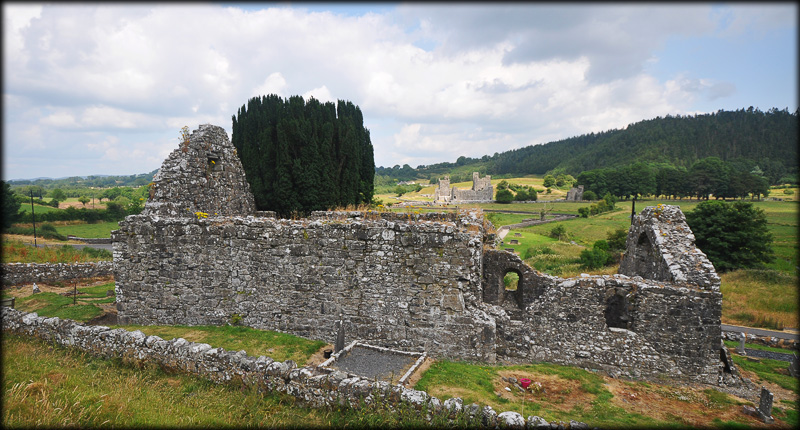
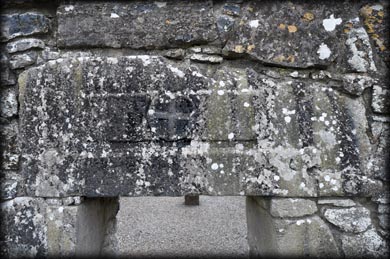
Trabeate doorway with Greek cross
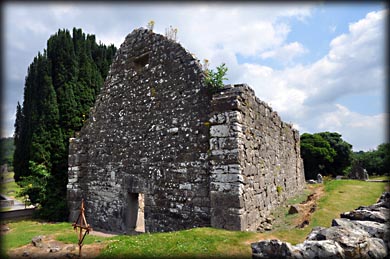
Entrance and antae
St. Féichín (aka St Féchín, Mo-ecca. ) is traditionally believed to have been born in Billa in the Parish of Collooney, Co. Sligo in the early part of the 7th century. He was educated under St Nahi of Archonry, before moving to Clonmacnoise. He founded several monastic houses around Ireland. The most notable was the foundation here at Fore. He also established monastic sites at Termonfechin in Louth, Cong in County Mayo, Ardoilén or High Island, Inismaan, and Omey Island in County Galway. He is venerated in Scotland where he is known by the Latin form of his name Vigeanus or St Vigeans. St Féichín died of yellow fever in c.665 AD.
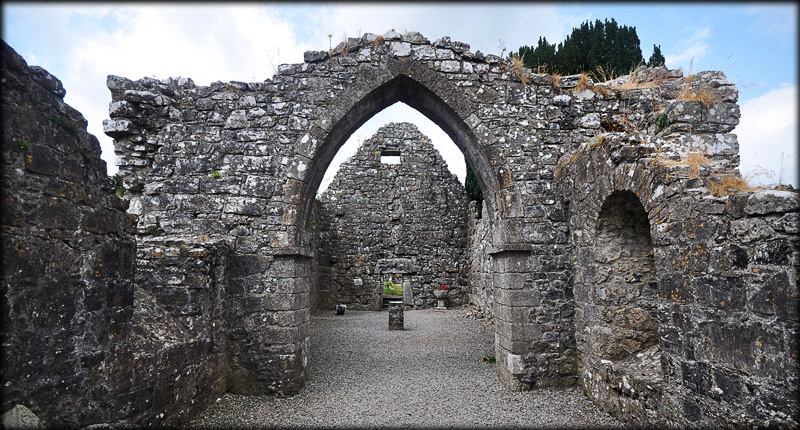
Cross Slabs
A small cross head has been set on a corbel stone in the east wall of the chancel, this is believed to be the head from the wayside cross at Clonnageeragh. Also located in the chancel, leaning against the south wall, are a couple of cross slabs a some architectural fragments. The largest slab stands 1.15 metres high and is decorated with a plain latin cross in relief. The second slab is a fragment of a large slab decorated with an intricate cross. Both of these slabs are also believed to be pre-norman.
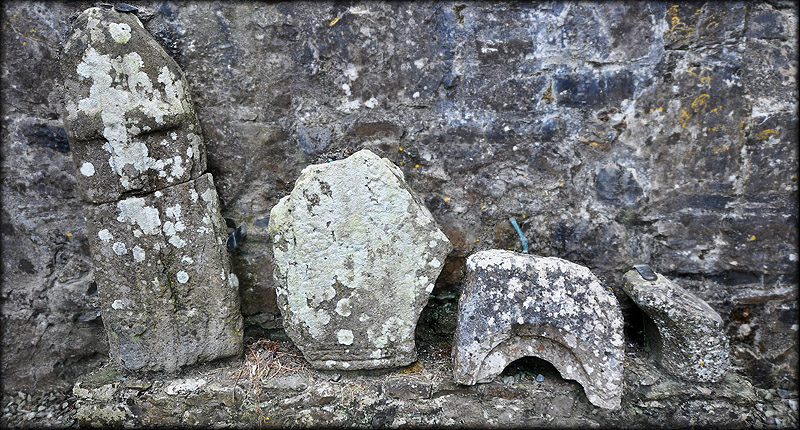
Font
Situated inside the nave, to the north of the doorway is a 13th century Font. The basin is resting on a square shaft. The corners of the shaft are moulded and this moulding continues onto the basin. They appear to have weathered carvings at the top. The basin is now acting as a plant pot. It is a lovely font and is similar the many others I have seen from this period.
Situated: From Castlepollard, County Westmeath take the R195 east, then take the third right. The church is a kilometre down this road on your right.
Discovery Map 41: N 5097 7047. Last visit July 2018.
Longitude: 7° 13' 43" W
Latitude: 53° 40' 53" N
Photos: Jim Dempsey.
